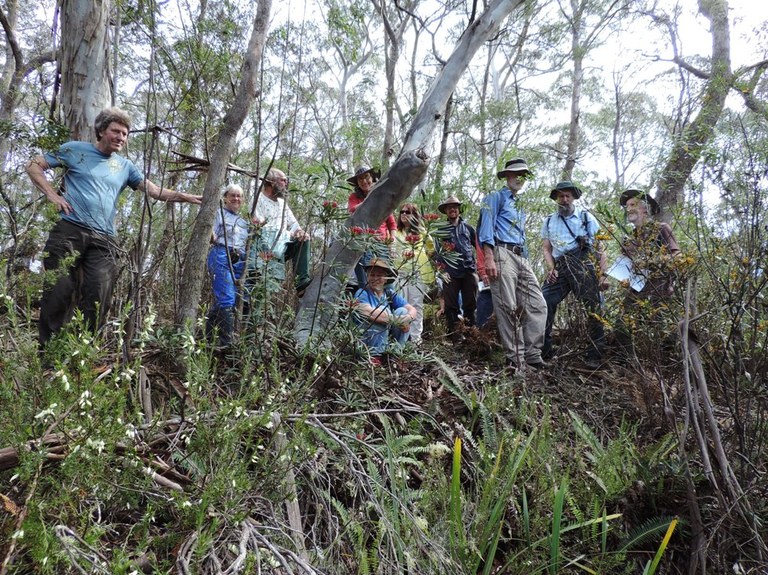
Plant Identification Walk
How can you tell the difference between Eucalyptus rubida, dalrympleana and viminalis? What are some Eucalypts that perform well when grown locally for timber? Just how many gorgeous little flowers grow along the Mongarlowe River?
How can you tell the difference between Eucalyptus rubida, dalrympleana and viminalis? What are some Eucalypts that perform well when grown locally for timber? Just how many gorgeous little flowers grow along the Mongarlowe River?
The Mongarlowe River nature walk and plant identification morning at the Tyndale-Biscoes property last Sunday was a inspiring and rewarding event. Twenty-four intrepid nature lovers gathered early and beat the heat to walk single file on high, riverside path built on the remains of old gold mining water races. Along the way, we inspected and learned about a dazzling array of plants, from towering trees to flowering shrubs and tiny forbs and orchids.
The event was arranged by Friends of Mongarlowe River and the Upper Shoalhaven Landcare Council. Expert knowledge was given by Keith McDougall, Lyn Ellis and Mary Appleby. Other walkers also shared details of many of the species including which ones work for regeneration projects, which are great for gardens and more.
A new handout developed by Keith for this event lists species that are commonly found along the Mongarlowe River, part of the Tableland Swamp Flats Forest plant community. This can be found on the Friends of Mongarlowe River website here http://www.landcare.nsw.gov.au/groups/friends-of-the-mongarlowe-river-inc/reports/mongarlowe-river-plant-identification-list/view. The now classic booklet Revegetation for Braidwood was welcomed by walkers, and is available from the Landcare Office and on-line at http://www.uppershoalhavenlandcare.com.au/wp-content/uploads/2014/10/Reveg-for-Braidwood-booklet.pdf.
By coincidence, the walk took place exactly on the 15th anniversary of the Landcare Trial Plot. Planted by the Mongarlowe Landcare Group the site is made up of two replicates of ten trees, by twenty species planted to assess their potential to produce timber, foliage, nuts, oil, windbreaks, shelter, charcoal and tannins. It was interesting to see that some local natives, like Eucalyptus sieberi, fastigata and oblique were unsuccessful in the first year due to frosting. For some species, the problem could well have been the exposed site and further trials are warranted.
Scones and quiche by Vanilla Catering on the deck of an old railway carriage-turned shack was a brilliant way to end a truly splendid morning.
(Answers: Viminalis tends to have bark hanging off the trunk and branches higher up the tree, and grow closer to waterways. Dalrympleana has wavy leaves, which are also wider than those of rubida. The results of the trial Landcare Trial Plot demonstration suggest that Eucalyptus nitens, viminalis and macarthuri are all promising timber species for this area. Millions of gorgeous little flowers from scores of native plant species grow along the Mongarlowe River.)




